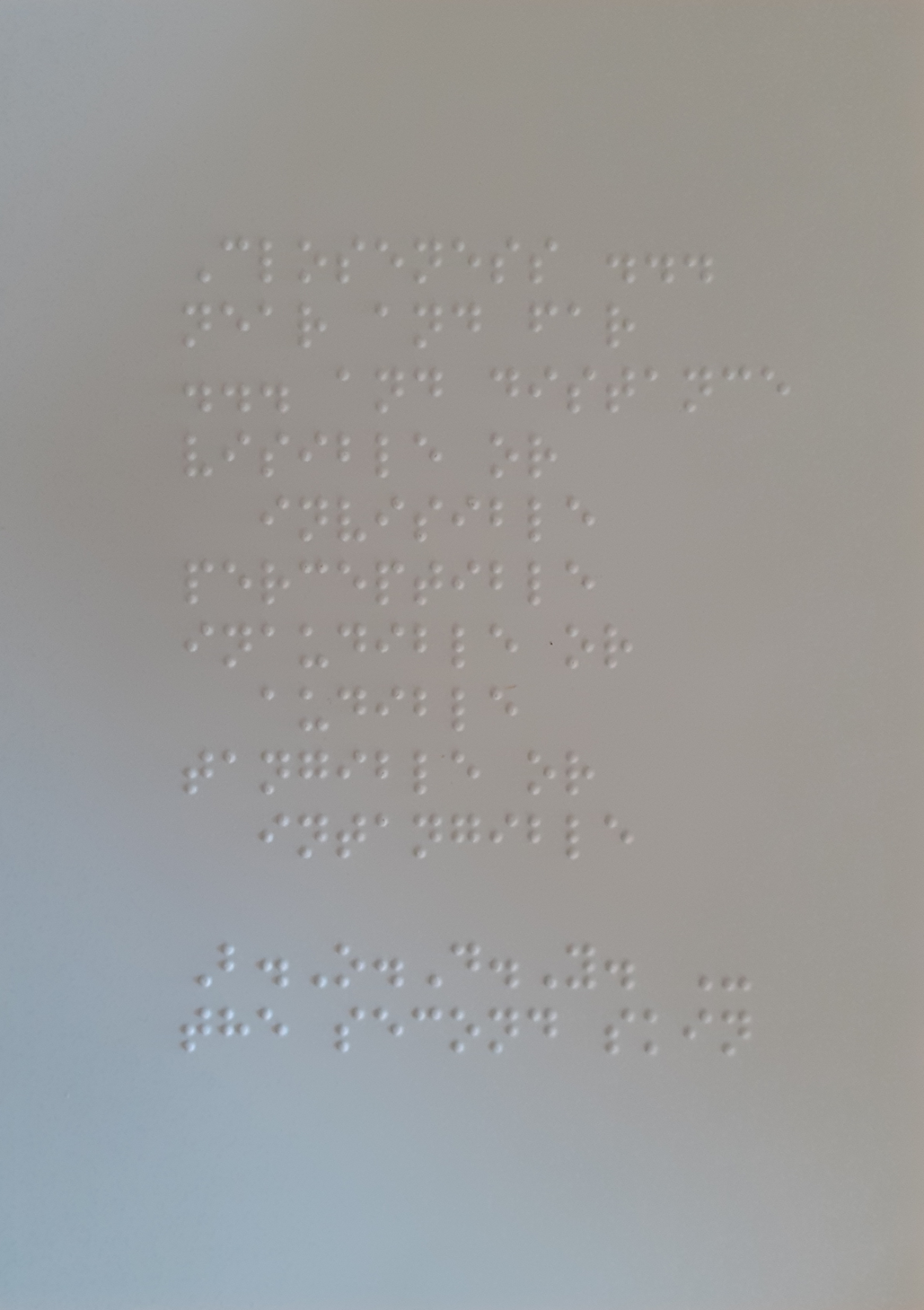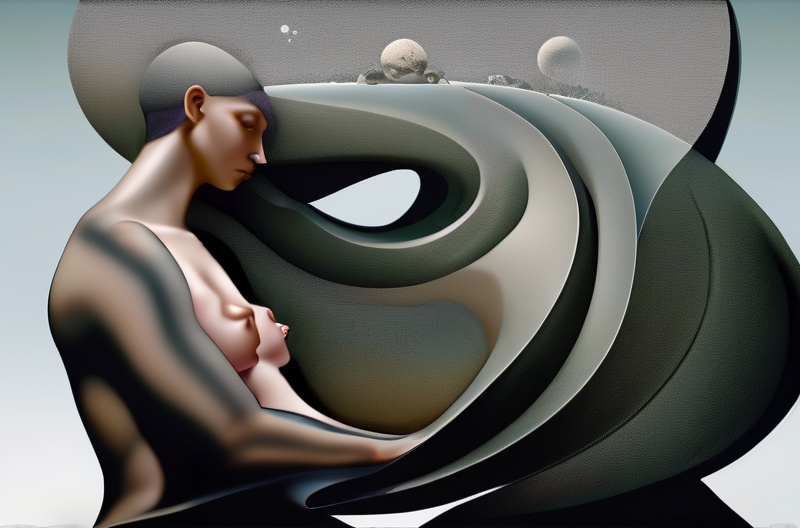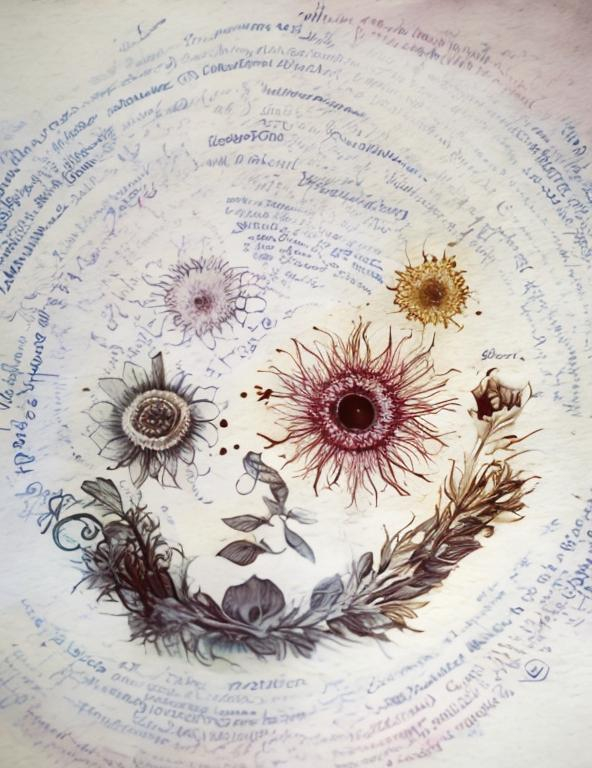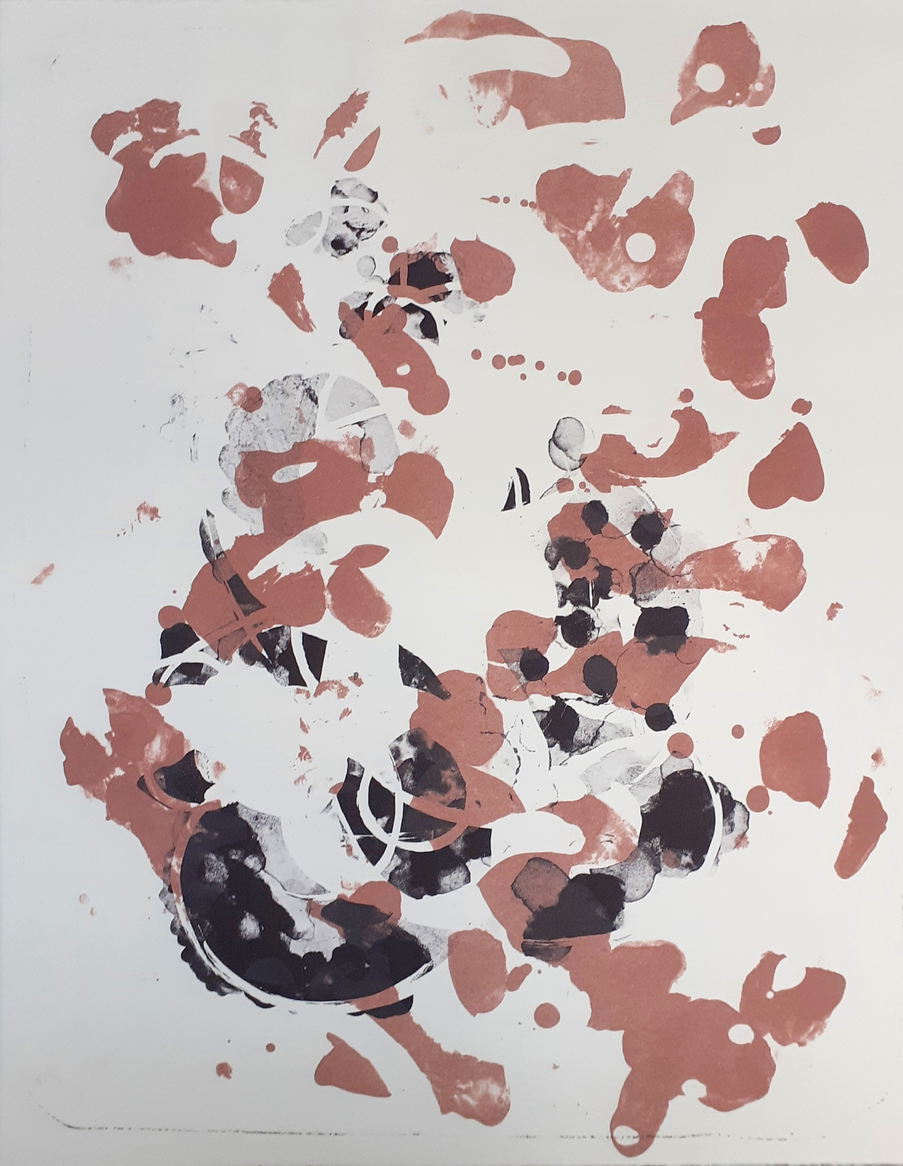Closeness ...
near and far
... and distance
visible or invisible
perceptible
inaudible or audible
tangible or intangible
– B.O.D.Y. - the second skin
Digital drawing with AI-generated Image (Raw) through the Poem Closeness and Distance (Original in German), 2024
Draft: Metamorphosis - Ethics and Aesthetics are One - from a Neuroscientific Perspective
Wittgenstein's "Ethics and Aesthetics are one" is the starting point of this research. "In the Notebooks, Wittgenstein states that 'the world and life are one', so perhaps the following can be said. Just as the aesthetic object is the single thing seen as if it were a whole world, so the ethical object, or life, is the multiplicity of the world seen as a single object". (Diané Collinson, The British Journal of Aesthetics, Volume 25, Issue 3, SUMMER 1985, pages 266-272)
Art transcends boundaries of race, nationality and gender. It is a creative act of unifying in the context of humanity, from the subject to the various topics, by asking questions. This point is the lack of "reality" (dealing with reality) from a sociological perspective. But it is impossible to define humanity and reality based on sociological statistics alone–is my perspective of Wittgenstein's "Ethics and Aesthetics are one". Thereby, I examine 'world and life' from the 21st century perspective.
Research objective(s): Creating and teaching post-conceptual art in Fine arts with/for all art mediums
A starting point of an experimental diary in practical exploring,
Digital drawing with AI-generated Image (Raw) through the writing, 2024
Research method: writing-mapping-collage-summarizing by AI-analysing*-transferring, which is based on Neo-DADA's by Fluxus in the 20th century
Who writes the text is me by myself, and who reads a summarized text is me by myself, is a reflection of the writing through 'thought' – Mindfulness, instead of mind-control by E-learning through the memory
DADA and Wittgenstein's
Not all of Fluxus and they did not look as an Academic artist, but many were dispositive or Neo- of DADA, Surrealism, Cubism, Belgian Symbolism, Japanese Noh and so on, were based on Academic Art.
Notice: In painting, the size of the canvas and the interval between paintings (the distance between the artist and the canvas) are proportional. The larger the canvas, the longer the "painting" tools are or are based on other methodologies. This relates to photography, photography is the method of using 'optic'. – whole and Life, and its detail in Aesthetics and Ethics
Here, I consider the informational field as a canvas.
We humans to represent x, we need a limited whole. You cannot create a representation unless you set some kind of limited field on your canvas, film, and physical or virtual space.
"Notice" is, I research in academic term e.g. in aesthetics, musicology, art history, sociology or other specific academic field.
Recent project is an exploration of the topic of randomness in natural science (physical) and data science (digital) through artistic practice. What will probably emerge is a new way of thinking about materiality, artistic methods and modes, etc from the posthuman perspective.
In art history, e.g. Belgian Symbolism
Posthumanism is a mode of thinking about the intersecting human, nonhuman, and technological worlds that has gained theoretical currency in the late twentieth and twenty-first centuries, especially in the wake of ecological consciousness and environmental campaigns that call into question the role of humans in shaping.
Belgian Symbolism was unique for its predilection for morbid and decadent subject matter. In the mid-19th century, Antoine Wiertz introduced death and decline as leitmotifs in art, which were taken up by a range of artists, from sculptors such as George Minne to the master of the absurd, James Ensor.
Surrealism is an art and cultural movement that developed in Europe in the aftermath of World War I in which artists aimed to allow the unconscious mind to express itself, often resulting in the depiction of illogical or dreamlike scenes and ideas. Its intention was, according to leader André Breton, to "resolve the previously contradictory conditions of dream and reality into an absolute reality, a super-reality", or surreality.It produced works of painting, writing, theatre, filmmaking, photography, and other media as well.
Works of Surrealism feature the element of surprise, unexpected juxtapositions and non sequitur. However, many Surrealist artists and writers regard their work as an expression of the philosophical movement first and foremost (for instance, of the "pure psychic automatism" Breton speaks of in the first Surrealist Manifesto), with the works themselves being secondary, i.e., artifacts of surrealist experimentation.
As an artist, I have been a surrealist from the aspect of neuroscience, not psychology, since high school in Japan. Because of Traditional Japanese Fine Arts and French literature.
The peace is in a balanced state, not a harmonic state.
What is 'balance'? - Transversal aesthetic
'harmony' is an account of beauty in aesthetics.
What is the concept of beauty in aesthetics?
Beauty is a positive aesthetic value that contrasts with ugliness as its negative counterpart. Different intuitions commonly associated with beauty and its nature are in conflict with each other, which poses certain difficulties for understanding it.
Thereby art history and musicology are the recognition of art.
Notice: What I can reflect between lithography and sound art (Klang Kunst) as a philosophical subject.
e.g. In the case of a tape music*
The "original'', in the case of sound, is the sound source and event in a space. In the case of lithography, the object and event in space (from a photograph to a lithography) change through transfering during the transcription process.
*Performance, "I am sitting in a room" by Alvin Lucier.
A study of research methodologies for exploring liberal arts literary and in the context of art history.
Modern art from ancient Greek culture
Postmodern to contemporary art
Book Review: John & Yoko/Plastic Ono Band, Joseph Nechvatal
“To create is to lighten, to unburden life, to invent new possibilities of life.”
~ Gilles Deleuze, Pure Immanence: Essays on A Life
Joseph Nechvtal used the tape (his music composition) for transferring to a computer-driven robotic machine, which paints with a brush onto canvas.
It was DAT (Digital Audio Tape), a digital audio magnetic tape for corresponding audio recorders.
The information is stored on a magnetic tape. However, digital recording significantly increases quality and convenience compared to analogue cassette recorders. With a sampling rate of up to 96 kHz and a maximum resolution of 24 bits, the sound potential is higher than that of the audio CD; however, this was not available in all devices. The most commonly used format was the audio CD-equivalent format with a 44.1 kHz sampling rate and 16 bits.
In parallel, I explore Bence Nanay's account of “semi-formalism.” How difficult it is in the 21st century is due to data science. My question is, will it be an experience? - at the level of consciousness and our bodily experience between virtuality and reality–since 2020 in artistic research
This is why Bence Nanay's account of “semi-formalism” in his thesis is still open account.–openness
This openness applies not only to the visual arts and music, but both are the center of creativity in artifact-based, in other words, knowledge-based art, which is different from the scientific “clinical experiment” in artistic research, which research is not for evidence, but rather for 'knowledge'.
When I read “Immersion Into Noise" (2011) by Joseph Necvtal, towards "still/silent" (2011) by Erika Matsunami (me), what I am exploring in “Immersion Into Noise" (2011) by Joseph Necvtal. His context of the subject in Immersion Into Noise lies in Tonoshiki's generation, for that, I am deeply grateful for the attention he gave them, which is as an American from the minority aspect.
Both artistic acts and appreciation of art can develop human cognitive abilities, understanding, and experience at a meta-level. However, the problem is the methodology.
An Exercise for BA level: Transferring of 'hate' (feeling) through AI digital drawing with writing poem - visualization. This transferring and transforming process is similar to the processing of lithography.
– Perception and art, healing and art
On Chagall's painting 'Still Life' in terms of art
- Drawing and Collage (in lithography) 'Still Life' in everyday life
- Klang Kunst (Sound art), on Noise in everyday life
Dealing with the topic of Klang/Sound ecology
- Artistic Research and Artistic Research Project
exploring 'performativity'
With the art medium of photography, video, sound and digital drawing
Spatial Installation; Collage, Assemblage, Art Object, Experimental Design,
Performance; Conceptual art; Photography; Drawing; Sound art; Video art;
- The Viral Tempest, Joseph Nechvatal -> Viral aesthetic
- Constellations for Koto and electronic sounds, Marc Battier
Keywords: transversality*; interface (interact); post-conceptual; assemblage; spatiality; randomness; environment; coexistence;
*In mathematics, transversality is a notion that describes how spaces can intersect; transversality can be seen as the "opposite" of tangency, and plays a role in general position. It formalizes the idea of a generic intersection in differential topology.
noun
1. geometry
a line intersecting two or more other lines
adjective
2. a less common word for transverse
Between artificiality and simultaneity
Contemporariness
Objective subjectivity
Transversal aesthetics
Creativity
An example: research on the topic of 'hate' (feeling) in mass media, commercial, film, comic and social media as a resource and a material.
Question for love and hate in (classical) Formalism
I respect for the work which can be explored this topic of 'hate' profoundly. Art is not for the produce of 'hate'. Art is a procedure of an exploration in humanity.
There is the study also in the classic fine arts (modernism), specific to study painting and sculpture. I studied sculpture.
It requiers to study from the context of the period from the Renaissance to the early 20th century (till Bachelor of Fine Arts), and the modern to postmodern period of the 20th century (Master of Fine Arts).
The current research is a curriculum for "contemporaneity" with the 21st century. A method is from the research of 'materiality', 'spatiality', and so on.
Another method is intervention from other academic disciplines in themes that are related to artistic research.
- Myths in aesthetics and art (liberal arts)
- CID/UNESCO members' Dance research in Athens, Greece is a recreation (Dance, Music and Literature in a Performance) of ancient Greek dance and music. I am also a member of CID/UNESCO, I follow their research (e.g. at the CID/UNESCO World Congress, Athens, Warsaw) for the exchanging.
An exercise on PhD in Art/Fine arts level for a script of a contemporary opera/participatory performance in the installation N.N-Zwischenliegend
On the topic of the Berlin Wall
still/silent 2007 - 6 ch sound for the installation by Erika Matsunami and Niklas Schmincke, Performance by Antonis Anissegos and Erika Matsunami, "Arts and Conversation“, curated by Katerina Valdivia Bruch, GlogauAIR, Berlin, 2007



